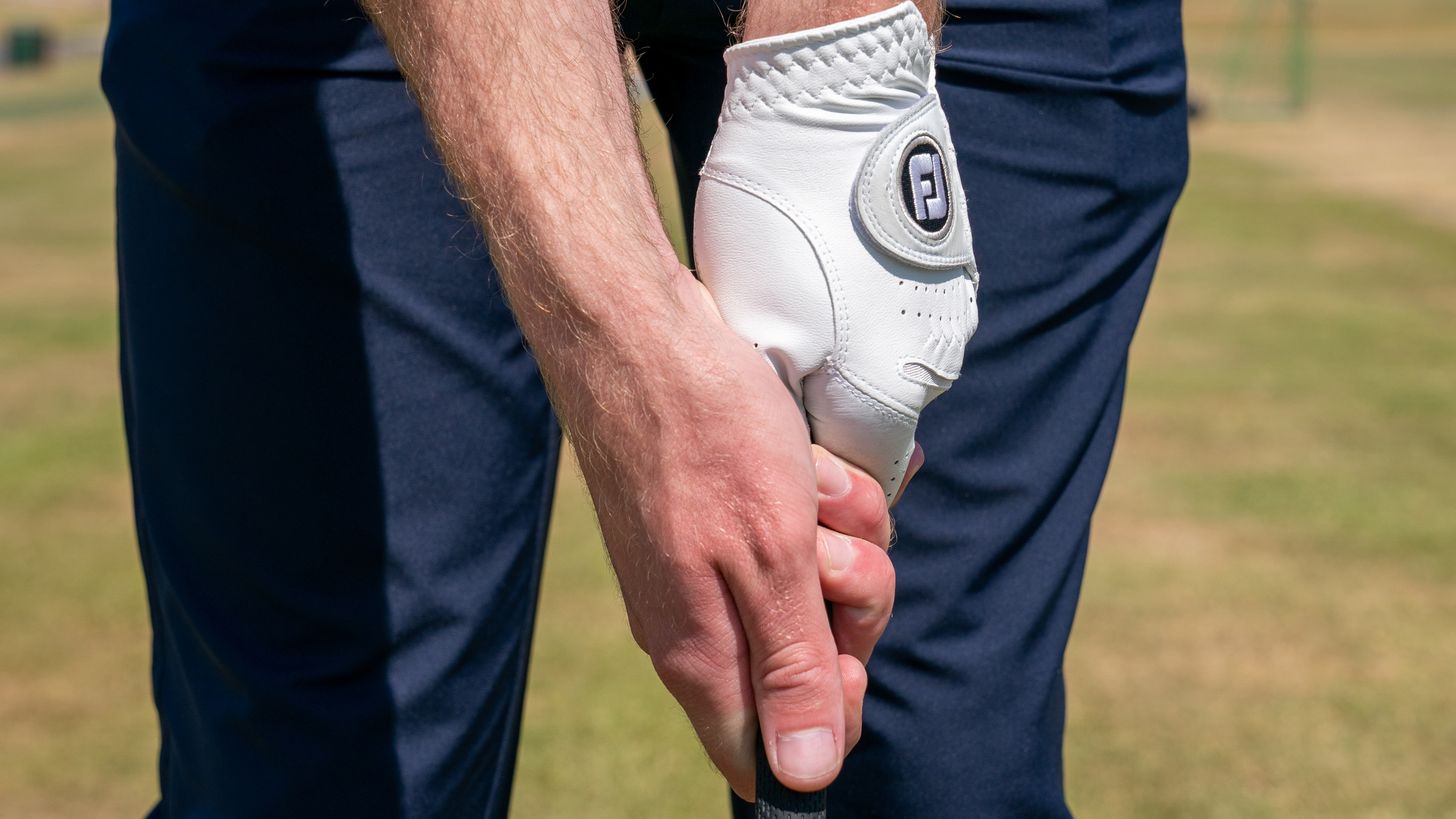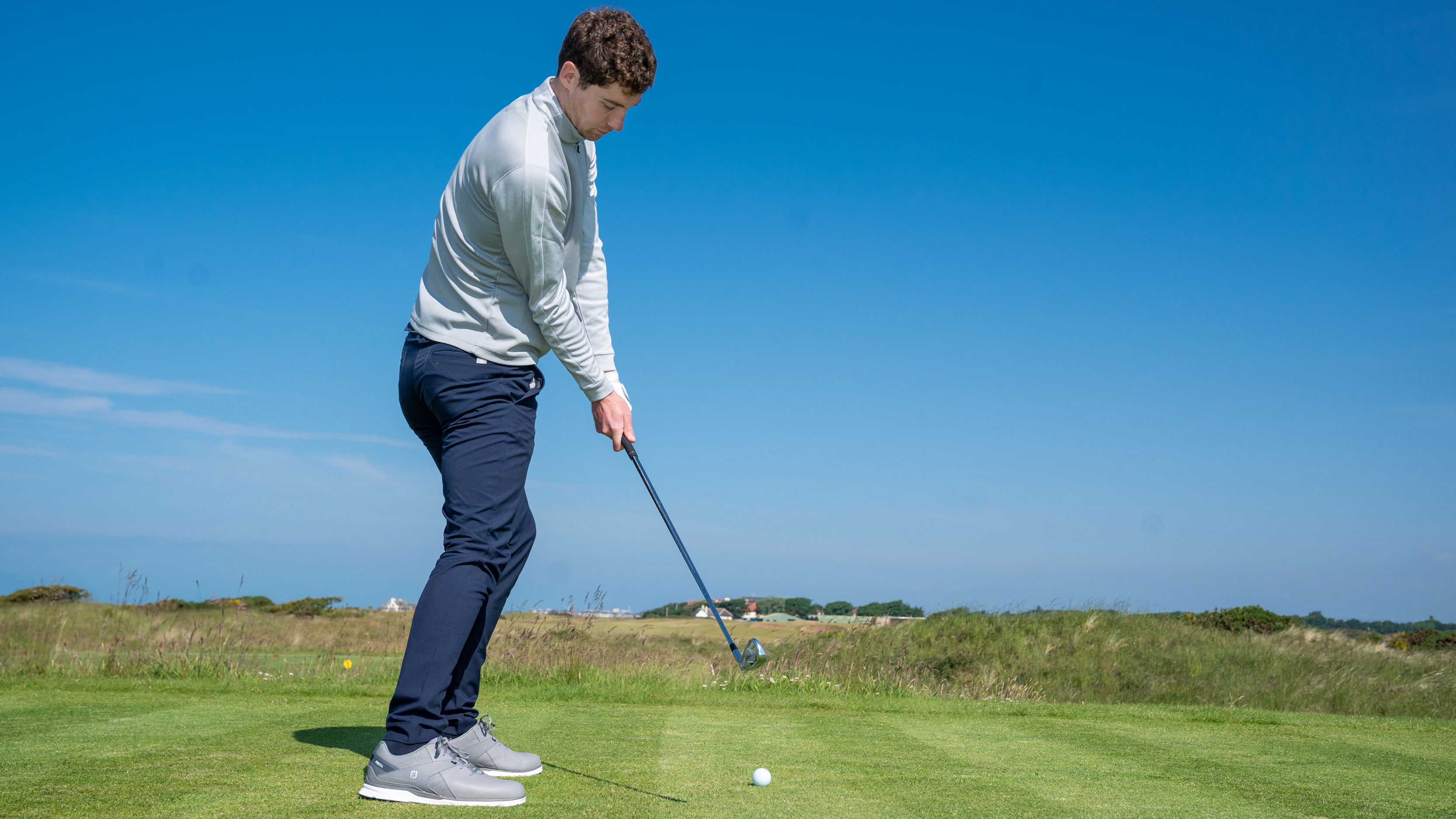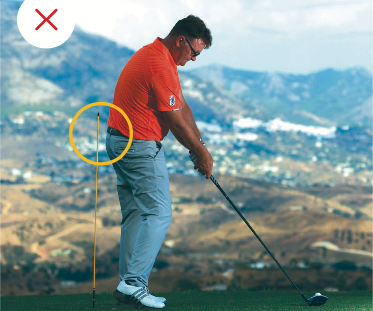
Understanding common golf shank causes will hopefully save you plenty of heartache and frustration, as this fault is one of the most destructive to your scorecard.
There are plenty of great golf tips and drills that can help you to stop shanking the golf ball, but understanding what causes the issue will hopefully help you to banish the problem for good.
In this video and article, Golf Monthly Top 50 Coach Andrew Jones sets out the main golf shank causes and offers some great cures to help you strike the ball better...
1. Poor Address Position
Firstly, you need to understand how far to stand from the ball, as this could be the cause of your problem. If you stand too close, you'll lose your spine angle in the downswing. This will cause you to lift up out of the shot and hit an open-faced shank.
Conversely, if you stand too far away from the ball, the momentum of the swing will likely cause you to lean into the ball through impact, with the shank a common result.

Consider the position of a weightlifter before they lift. Their shoulders are over the middle of their feet, with their weight resting over the balls of their feet. When addressing the golf ball, try to focus on this weight distribution. Ensuring you have the perfect ball position will also help you to avoid shanking the ball.
Leave a gap of approximately the width of an open hand between your tight and the butt of the club. This will help to create the perfect posture and the correct distance from the ball.
2. Unstable Grip
The next checkpoint relates to your grip, and more importantly, your grip pressure.
Having a neutral, or 'perfect' golf grip, will help you to stop shanking the golf ball. Some players have such a light grip pressure that the club moves in their hands during the swing.

To check your grip pressure, place some grass firstly on top of your left thumb and then between the butt of the club and the pad of your left hand. This grass should remain in place during the swing. If your grip pressure is too light it is likely to fall down.
3. Swing Path
Understanding your swing path will help you to assess your strike patterns, including those that you are unhappy with. Most golfers know the ideal path goes from in to out, but this belief can make players whip the club away on the inside during the takeaway.
From the position that creates at the top of the backswing, the only way to get the club back to the ball is with an over the top swing. This actually causes an out to in path, the opposite of what the player wanted, with the hosel of the club being presented to the ball.

To help, place a tee behind the ball, just outside the ball-to-target line. As you take the club away keep the head working just inside the tee, then as you approach impact, aim to miss the tee on the inside. This might take a while to perform successfully and you’re likely to hit some bad shots along the way but keep working on it. This simple drill will help you to groove a much better swing path.
4. Sliding Into The Ball
Another common fault relates to the way your lower body is working in the downswing. Sometimes a shank is the result of a lower body ‘slide’ whereby the knees start to move towards the target causing the hosel to lead.

A great drill designed to stabilise your lower body is to place your golf bag next to your left hip at address. As you start the downswing your hips should bump into the bag and then your lower body turns (without sliding towards the target). If you find yourself clattering into the bag (with the bag coming close to falling over) work on stabilising your lower body.
5. Early Extension
The final of the common golf shank causes to consider is early extension. This refers to when your hips move towards the ball in the downswing. Just as with the 'sliding' issue above, it has the effect of cramping you through impact and forcing the hosel to lead into the ball.
Part of the issue here may well relate to core strength. You need the strength in your midriff to be able to maintain your posture throughout the swing. Performing some simple golf core exercises should help.

There is also a good drill you can use for this on the range with an alignment stick or at home, without a golf club. Stand upright against a wall and then take your normal golf posture so your backside is in contact with the wall at address (if you are doing this at the range, place an alignment stick behind you as shown above). Now practice your swing but, crucially, ensure your backside remains in contact with the wall through the would-be impact area.
If you have a tendency to move your hips towards the ball (as shown above), this drill will highlight it. You'll also quickly get a sense for what it feels like to retain your posture. Performing this move regularly will really help.







